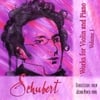So you say that you are into Bach. You love the Well-Tempered Clavier, the Two- and Three-part Inventions, the Partitas, the Suites, etc. You’ve had two years of class piano and one year of private lessons. You think Glenn Gould and Rosalyn Tureck are major deities. What repertoire of the German contrapuntal master should you attempt first?
Many students make the mistake of starting their rewarding relationship with Bach by going too far on the “first date.” A particularly enthusiastic Bach worshipper might love to jump right into the Inventions, or one of the preludes from the WTC, or even a sarabande from one of the Partitas.
Before long, this student is tearing out her hair because it just isn’t working: it is taking months to learn one page, the coordination of the hands is making your mind numb, and what fingering should be used for this 16th-note passage? Well, most likely the answer is that the chosen piece is just too difficult for you at the present moment. Why not start off learning some of the simpler Bach pieces, the ones that Bach himself thought were good enough for introducing his musical style without thoroughly overwhelming the inexperienced player?
There are three major sources for Bach’s famous teaching pieces:
1. First Notebook for Anna Magdalena Bach, 1722 (all works by J.S. Bach.)
2. Second Notebook for Anna Magdalena Bach, 1725 (works by Bach and other composers, some unknown.)
These notebooks were music collections (in manuscript) presented to Bach’s second wife, Anna Magdalena. There are a lot of distinct dance-style pieces (marches, minuets, bourrées, polonaises, rondeaux, etc.) as well as pieces from traditional instrumental/vocal genres (preludes, sonatas, chorales, arias, etc.)
3. Little Clavier Book for Wilhelm Friedemann Bach, 1720.
This book also contains many diverse pieces by Bach; some of these pieces may have also been written by W.F. Bach or other composers of the era. It was used primarily as an instruction book for Bach’s son (Wilhelm Friedemann).
While it is obvious that a lot of these pieces were intended to be instructional, they remain some of the most musically sophisticated and intricate examples of early intermediate repertoire even today. They are delightfully contrapuntal but do not sport the complexity found in the inventions, fugues, and other advanced repertoire. These pieces work great as a “prelude” (pun intended, sorry) to the next level of Bach’s repertoire.
There are many good collections available from music publishers that simplify the learning process through a carefully graded selection process. One of the best of these collections is presented below (with a link to the book at Sheetmusicplus.com):
 | Johann Sebastian Bach: An Introduction to his Keyboard Music Composed by Johann Sebastian Bach (1685-1750), edited by Willard A. Plamer. Instrumental solo book and performance CD for piano solo. Series: Alfred Masterwork Library CD Editions. 64 pages. Published by Alfred Publishing. (AP.24456) See more info... |
I’ve used this particular collection for many students and find it to be very useful for many reasons: There is a nice preface on Bach’s life, a solid tutorial on ornamentation and stylistic practices, and there are good fingering, dynamic, and tempo suggestions in the pieces themselves.
If you are committed to owning more complete editions of the original sources and can handle (hopefully with some guidance from an informed teacher) selecting repertoire at your proper level of difficulty, below are some collections from respected publishers:
 | Johann Sebastian Bach: Notebook for Anna Magdalena Bach Figured bass by Siegfried Petrenz, composed by Johann Sebastian Bach (1685-1750), edited by Ernst-Gunter Heinemann. Collection for Piano (Harpsichord), 2-hands. Urtext edition-paper bound. 65 pages. Published by G. Henle. (HE.349) See more info... |
 | Little Clavier Book By Johann Sebastian Bach. Edited by Willard A. Palmer. For Piano. Piano Collection. Alfred Masterwork Edition. 0. Masterwork. Level: Intermediate / Late Intermediate (grade 4/5/6). Book. 64 pages. Published by Alfred Publishing. (603) See more info... |
| Johann Sebastian Bach: Notebook For Wilhelm Friedemann Bach Composed by Johann Sebastian Bach (1685-1750), edited by Wolfgang Plath. Collection for solo piano (or harpsichord). Urtext of the New Bach Edition. 119 pages. Published by Baerenreiter-Ausgaben (German import). (BA.BA5163) See more info... |
If you start your Bach keyboard study with these pieces, with some dedicated work and practice you will gain familiarity with Bach’s style and the coordination necessary for proceeding into the Inventions, Preludes and Fugues, and the suites.
I was originally inspired to write a post about Bach’s easier repertoire through this interesting inquiry and exchange on my post about “chunking” Bach’s first invention. It goes to show that people are indeed benefiting from blog posts regarding good practice techniques and other pedagogical matters. More posts on repertoire and practice techniques will follow at this blog in coming months.








2 comments:
Thank you so much for taking the time to pull all of those resources into one place. While I'm waiting for my training wheels to arrive, I'll continue my slow work on the C MAJ 2 part invention. It may be too much of a challenge at the present moment, but even one measure well played is extremely soul-satisfying. I've set up a dedicated practice log... check in again at the end of the month if you have a minute!
Will do, GGP. From what I could tell, you're doing just fine with your invention so far (so stick with it!) You'll probably find that some of these other pieces from the above-mentioned resources will take less time to master than the invention. Enjoy!
Post a Comment